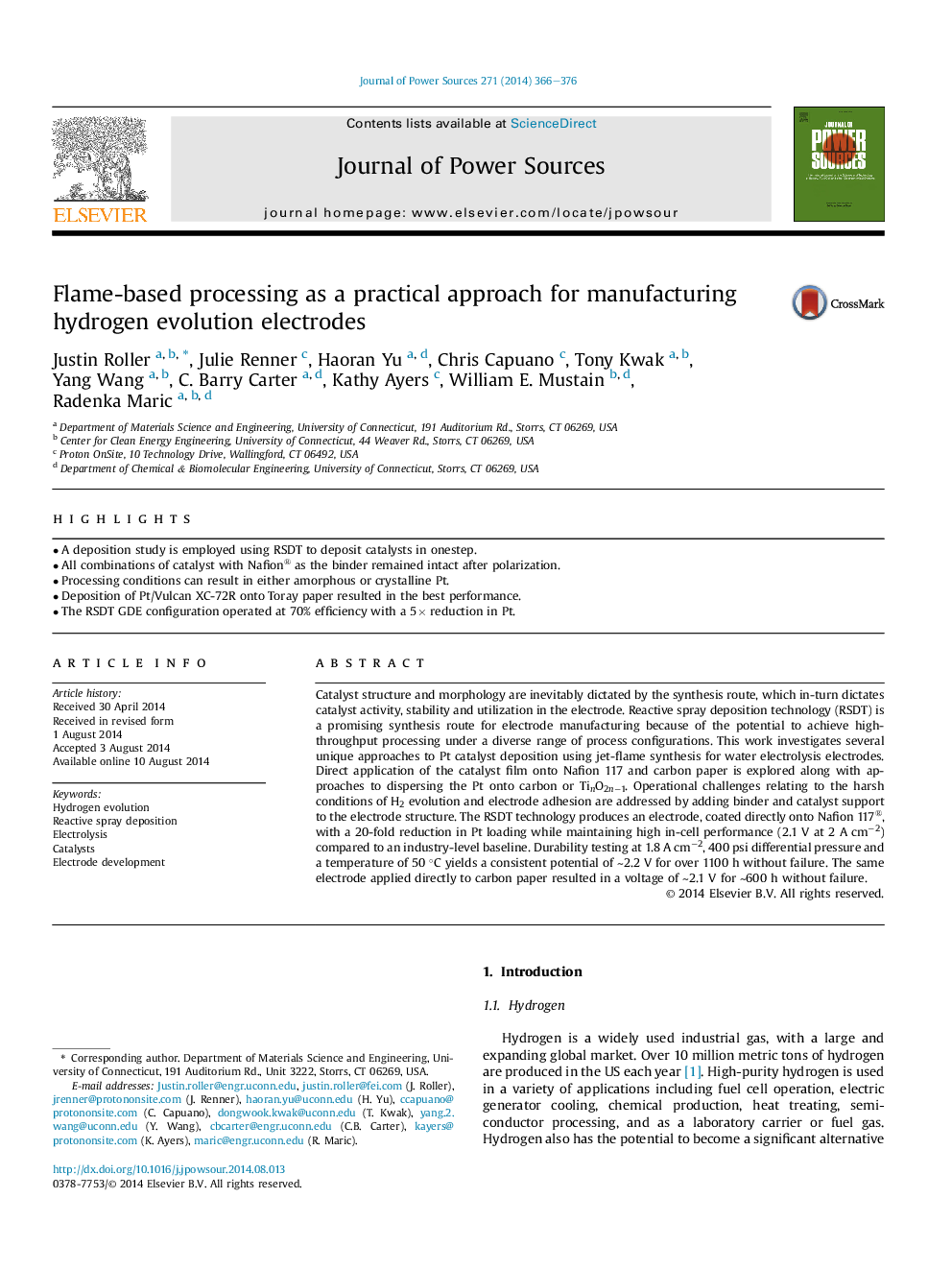| Article ID | Journal | Published Year | Pages | File Type |
|---|---|---|---|---|
| 7735631 | Journal of Power Sources | 2014 | 11 Pages |
Abstract
Catalyst structure and morphology are inevitably dictated by the synthesis route, which in-turn dictates catalyst activity, stability and utilization in the electrode. Reactive spray deposition technology (RSDT) is a promising synthesis route for electrode manufacturing because of the potential to achieve high-throughput processing under a diverse range of process configurations. This work investigates several unique approaches to Pt catalyst deposition using jet-flame synthesis for water electrolysis electrodes. Direct application of the catalyst film onto Nafion 117 and carbon paper is explored along with approaches to dispersing the Pt onto carbon or TinO2nâ1. Operational challenges relating to the harsh conditions of H2 evolution and electrode adhesion are addressed by adding binder and catalyst support to the electrode structure. The RSDT technology produces an electrode, coated directly onto Nafion 117®, with a 20-fold reduction in Pt loading while maintaining high in-cell performance (2.1 V at 2 A cmâ2) compared to an industry-level baseline. Durability testing at 1.8 A cmâ2, 400 psi differential pressure and a temperature of 50 °C yields a consistent potential of â¼2.2 V for over 1100 h without failure. The same electrode applied directly to carbon paper resulted in a voltage of â¼2.1 V for â¼600 h without failure.
Related Topics
Physical Sciences and Engineering
Chemistry
Electrochemistry
Authors
Justin Roller, Julie Renner, Haoran Yu, Chris Capuano, Tony Kwak, Yang Wang, C. Barry Carter, Kathy Ayers, William E. Mustain, Radenka Maric,
